Growing Cannabis In The Woods: The Stealthiest Method Of Them All
- Pros and Cons Of Growing In The Woods
- How-To: Guerilla Growing In The Woods
- Pick The Right Strain
- Consider The Climate
- Choose The Spot
- Think Of An Alibi
- Keep Your Grow Secret
- Plant In Spring
- Prepare The Soil
- Plant Your Cannabis
- Maintain Your Plants
- Watering And Watching For Excess Moisture
- Checking For Pests
- Feeding
- Harvesting
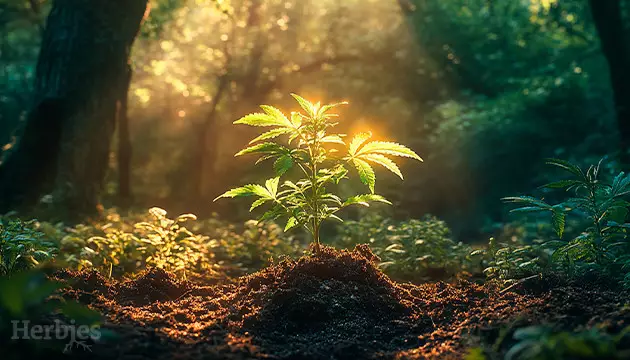
Many growers do not have the opportunity to cultivate cannabis indoors or outdoors on their own property. The reasons can be different, from a lack of space or nosey neighbors, to the regulations and law enforcement in their jurisdiction or country. For cases like this, we have prepared a guide to growing cannabis in a safer, more discreet area – the woods.
Disclaimer: Cannabis cultivation is subject to local laws and regulations. Ensure that you are in a region where growing cannabis is legally permitted before attempting any of the practices discussed here.
Have You Ever Heard Of Guerilla Growing?
A lot of people wish to grow cannabis but are lacking in available locations or options. Often, growing therefore has to be done on public or private land or in wildlife sanctuaries. This way of production is often referred to as guerilla growing. It can be done in a variety of ways, but the main traits are doing it as discreetly as possible. Growing marijuana in the woods is one of the most common methods of guerilla growing, which comes with its own specific needs and considerations.
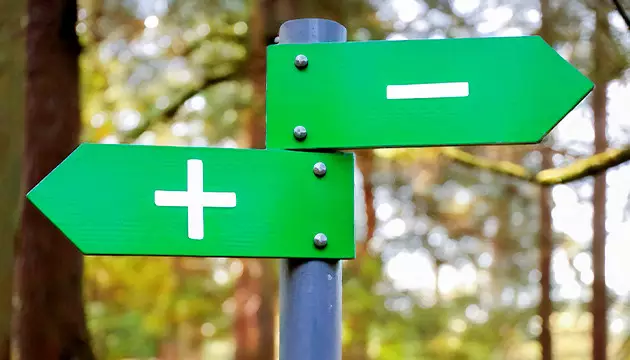
Pros Of Growing In The Woods
When we compare the history and examples of others who grow marijuana in the forest, we can see multiple benefits over other methods.
- Growing weed in the woods doesn’t require significant investments or as much capital as indoor or greenhouse growing, so there’s a far lower cost of entry for production.
- It’s hard to prove that a plantation belongs to a certain person in the case of legal defense (if ever needed).
- Growers can have many growing spots in different areas to increase yields as well as reduce risk of losing all of the harvest at once due to thieves or law enforcement.
- Growing in the woods can be done organically and is eco-friendly.
Now, To The Cons
The benefits of growing marijuana in the forest can often be outweighed by the risks and liabilities that come with guerrilla growing. It’s therefore very important to be mindful of all the factors that go into this style of growing.
- There’s always a risk of losing all your harvest. This can come from thieves, law enforcement, animals, lack of care or, most likely, the weather.
- It’s not convenient or safe to visit a hidden garden often. Pruning and watering can suffer because of this, which is important because poor plant care will affect overall quality and yields (unless you or someone you trust decides to live on-site).
- Nutrient runoff when growing weed in the woods may be dangerous for locals. If you use pesticides or inorganic nutrients, the downstream water could become contaminated for other people or animals.
How-To: Guerilla Growing In The Woods
There are a lot of decisions involved in growing marijuana in the forest. Below is a list of considerations and factors that should be taken into consideration while in your planning phase. Keep in mind that every location and situation is different – you must be ready and willing to adapt to the area you're in.
Disclaimer: This guide is intended for readers in regions where cannabis cultivation is legally permitted on private land. Always comply with local laws and regulations, and ensure that any land used for cultivation is legally accessible.
Pick The Right Strain

It is important to choose proper cannabis strains for your region. Crucial features to pay attention to when considering guerilla growing in the woods are:
- Stable immunity to outdoor conditions
- Resistance to mold and moist conditions
- Pest resistance
- Irrigation and watering tolerance
- Yields
- Flowering times (depends on your region)
- Terpene content (smell)
- Medical conditions or personal preferences
When growing at home, your grow op can be maintained more often. However, when growing cannabis in the woods or less densely populated areas, you won’t be able to visit your farm as often as you should. For that reason, it’s better to focus on strains that can be planted and forgotten for a while if you're unable to access your grow easily.
Growing Autoflowers In The Woods
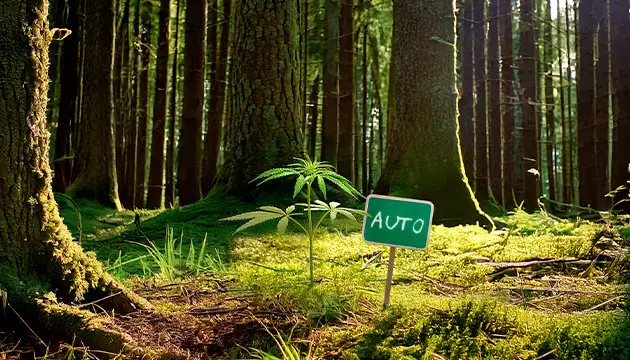
Autoflowering strains are also good for a few reasons and have become more common for outdoor growers around the world. They have shorter flowering times and will flower regardless of the amount of light they receive. This removes the consideration of the number of hours of light needed for plants to start flowering. However, traditionally, these types of strains have lower yields and cannabinoid content, which is why commercial growers have tended to avoid them over the last few decades.
Pick Feminized For Guerilla Growing
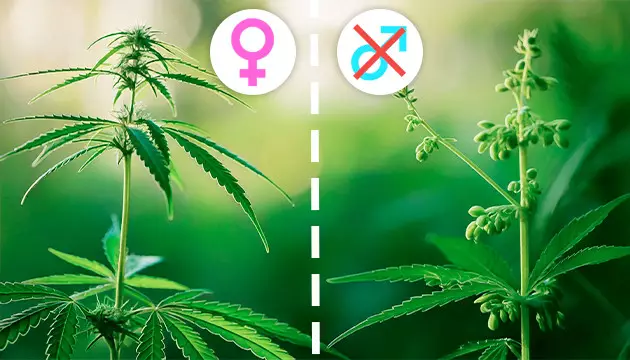
For anyone growing in the woods, it’s better to choose feminized strains over regular seeds. Regular seeds need constant attention at the beginning of the flowering stage. You have to scrupulously watch for the appearance of pollen sacs on the male plants. These should be destroyed as soon as possible and with care so as not to spread pollen. This can be done by putting a plastic bag over the plant before cutting it down. Plan to then burn or bury the plants far away. When growing in the woods, there’s the risk of missing this important step, as the grower will not be able to inspect the bushes multiple times a day or week. If female flowers are pollinated, this will cause all the nutrients and energy to go toward producing seeds rather than THC and other cannabinoids.
Here are some seeds perfect for a guerilla grow in the woods. You can always find more guerilla grow seeds at Herbies with our search function and filters.
Disclaimer: This content is intended for readers aged 21 and over in regions where cannabis use and cultivation are legally permitted.
Wedding Glue Auto (FastBuds)
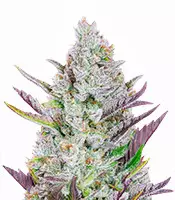
- Autoflowering
- 450 - 550 g/m² indoors
60 - 160 g/plant outdoors - Well-balanced and pleasant
Autoflowering and feminized, Wedding Glue Auto from FastBuds are perfect guerilla seeds. This hybrid is discreet and doesn’t require much attention, while also producing delicious sweet buds with happy effects and 26% THC.
Godzilla Cookies Auto (Herbies Seeds)
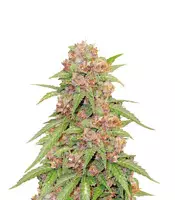

- Autoflowering
- Hours of belly laughs
- 450 - 600 g/m² indoors
This strain is easy to grow and will basically grow itself in your hidden cannabis guerilla grow. Godzilla Cookies Auto reaches the heights of only 110cm (3’7”) and will stay discreet when surrounded by bushes and trees. In just 75 days you can reap a bountiful guerilla yield of 27% THC weed.
Green Ninja (Heavyweight Seeds)
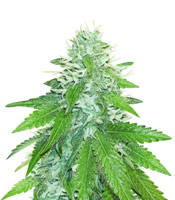
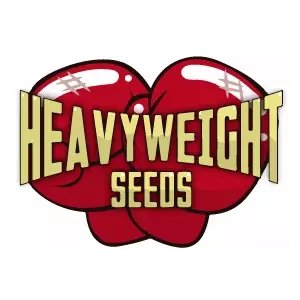
- Photoperiod
- Calm like a ninja
- 500 - 550 g/m² indoors
800 g/plant outdoors
If you’re looking for a bigger plant for your guerilla grow, look no further than Green Ninja. This strain manages to stay discreet thanks to producing zero odour – no passbyers will ever notice it! Plant in spring, and in September you’ll be already enjoying heavy harvests of 22% THC weed with perfectly balanced cerebral and physical effects.
Golosa Early Version (Delicious Seeds)
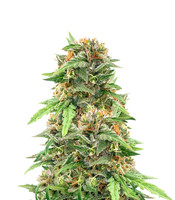
- Photoperiod
- Potency for experienced ones
- 550 g/m² indoors
1000 g/plant outdoors
If you live in a wet area, Golosa Early Version might be your best bet for an outdoor guerilla grow! This strain from Delicious seeds is extremely mold-resistant and aren’t prone to pest infestations. Cherry on top is its extra quick finish in September and 26% THC level.
Consider The Climate
The act of guerrilla growing outdoors is possible in most geographical locations. That said, there are places in the world that don’t get enough hours of sunlight to grow cannabis plants up to a large enough size during the vegetative stage. This lack of size will reduce your yields. Normally, the bigger you make your plants for flowering time, the more they will produce.
On the other hand, if there’s too much light (14+ hours), this won’t allow the plant to flower or start producing buds at all. Growers in these regions require autoflowering genes in the strain variety they plan to use.
Choose The Spot

The location for planting cannabis in the woods must be approached with caution and research. Mistakes at this stage could lead to a random passerby or law enforcement discovering the crop. Cannabis can also easily die if the place is not well-lit with enough direct sunlight, or if the soil has excess moisture, contaminants or improper nutrients.
How to find a place for cannabis in the woods? Here are some important rules:
- Make sure there is a water source nearby. If there are no streams close to the site, try to find groundwater. If you’re lucky and diligent, you can find this by digging the soil to a depth of 1 meter to see how moist the soil is.
- Keep the soil pH between 6.0 and 7.0. Soil in pine forest is usually acidic (low pH), so the best solution is to dig a large pit and then fill it with a balanced, high-nutrient soil mix. Often, this is not a requirement, but for a better yield, it’s recommended to create the best possible soil conditions.
- Choose places in the forest where there’s enough sunlight. Light is a necessary factor for the active vegetative growth and development of cannabinoids during flowering. Plants should be in direct sunlight for no less than 6-8 hours a day. A good option is somewhere on a southern slope on a forest hill, where old trees are felled and new ones have not yet had time to grow and cast shadows.
Think Of An Alibi
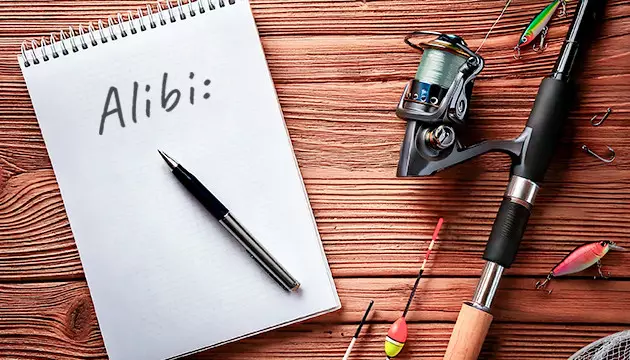
When planning a trip to your plants, make sure you have a suitable alibi (for example, hunting, rock climbing or fishing) and take the appropriate equipment with you.
Nothing looks more suspicious than a random human in places where humans don't normally go without good reason. It also helps if you actually have an interest in whatever activity you’re pretending to be doing. In the case of unexpected interaction with other people, whether it be government or private citizens, having deep knowledge, equipment and a cover story will help prevent unwanted attention or additional questioning.
It’s also important that during flowering and harvest time, you have a clean pair of clothes sealed in a plastic bag for when you return home. The resin will stick to your body and clothes as you work, and the smell can be a dead giveaway to others as soon as you’re within a few meters of them. Packing hand sanitizer or rubbing alcohol to help remove the resin or "finger hash" off your hands, body and equipment is essential to keeping your work hidden.
Disclaimer: This content is intended for readers aged 21 and over in regions where cannabis use and cultivation are legally permitted.
Keep Your Grow Secret
Your planting area should be located far from paths trampled by hunters, mushroom pickers or fishermen. This is where environmental or conservation enforcement (like rangers or game wardens) will often pass by as well. The best way to check whether people are walking near this place is to attach a couple of paper banknotes to the branches. If the money stays intact for a week or two, it means the place is far enough from random eyes to notice.
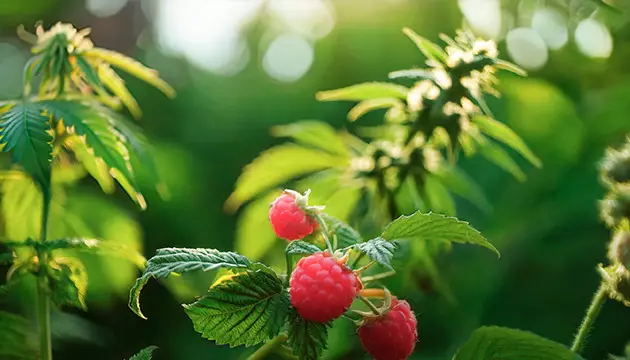
It’s a good idea to plant cannabis in thickets of similar plants like raspberries, nettles, sage or any prickly shrubs. The plants act as a form of concealment. This way, you can reduce the risk of your plants being detected.
Plant In Spring
It’s important to know when the proper times to plant are and when to harvest. This will be specific to your spot in the world. However, to ensure your plant has enough time for vegetative growth, it’s advisable to plant in spring, as soon as temperatures are warm enough (not colder than 10C or 50F at night). To solve the most common problems associated with traditional harvests that the fall weather brings, like cold temperatures, rains, winds and early snow, we recommend planting as early as possible or to choose strains with shorter flowering periods. This way, you’ll be able to harvest before the weather gets worse. In any case, to avoid unwanted complications, you need to know the strain you’re growing and follow the seed bank’s directions on when to plant and harvest.
Prepare The Soil
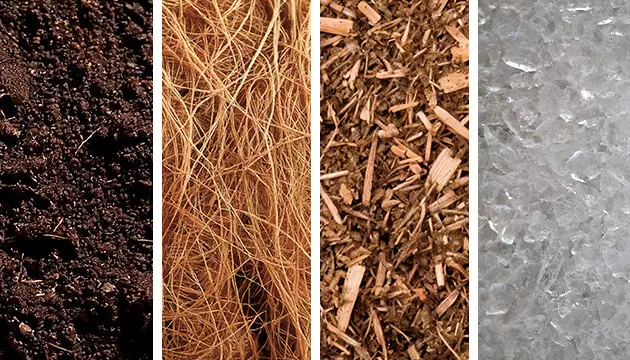
| Peat | Coconut fiber | Sawdust Polymer | Hydrogel |
Preparing the grow site in advance is easy and requires little more than digging holes and filling them with a mixture of purchased soil or local forest soil. Organic fertilizers and materials that will retain moisture for a long time can be added to the soil mixture. You can use peat (this is able to absorb twenty times more water than its own weight), coconut fiber, compost and sawdust as possible materials. An excellent modern option is polymer hydrogel, which has a high ability to retain moisture and gradually give it to the soil. The need for frequent watering will therefore be dealt with, even during a drought.
Plant Your Cannabis
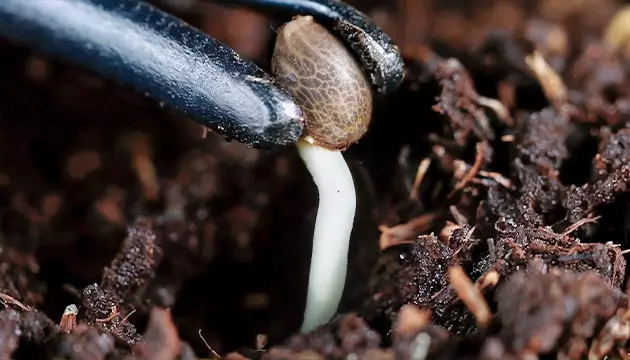
There are many options regarding how to plant your seeds, but for most beginners, you can simply dig a small hole with your finger or use a stick to dig a few centimeters down into the soil. Place your seed inside and then lightly compact soil on top.
However, the optimal choice is to germinate your seeds before burying them, as this provides a higher rate of assurance that the seeds will "pop" or break open and start to root.
Maintain Your Plants
There are many different ways to maintain your plants throughout their growth, from pruning, feeding, watering, and pest and mold monitoring to different training methods that improve yields like low-stress training.
It’s important to follow the normal steps for cannabis maintenance during guerilla growing. While weed grows naturally and without much effort in nature, this lack of control can lead to smaller yields and loss in quality. The more effort you put into your grow, the better the results will be.
Watering And Watching For Excess Moisture
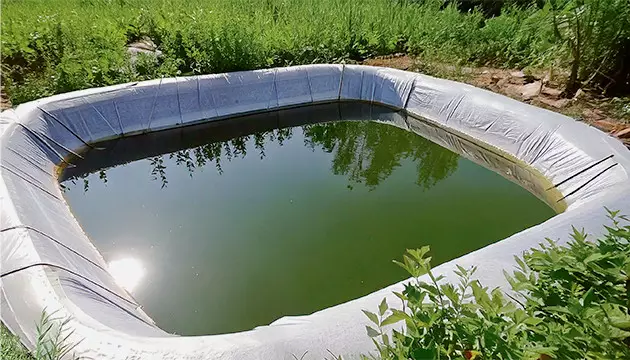
If your hidden garden is far from a lake, river or groundwater, it will be difficult to water and feed. The best option is to carry water for irrigation and your premixed fertilized liquid in backpacks, putting your premixed fertilized liquid in as well. You can also bury a rainwater container in the ground nearby. As we mentioned before, it’s a good idea to add water-retaining additives to the soil mix you’re growing in, this in case your hidden grow op is located in an area susceptible to drought. If you use hydrogel or nutrient-balanced soil, there’s no need to worry about watering for up to 10 days without rain. If no precipitation has occurred within 2 weeks, watering will then become necessary.
Another big issue with growing weed in the forest is that excessive moisture from the rainfall, especially in fall, can lead to mold. The infamous problem of bud rot becomes more common as the rains come toward the end of flowering or around harvest time. Bud rot is when the buds start to mold from the inside because of excessive moisture.
A good way to check for this is by lightly pinching the large and formed buds. They should feel dense and tight. If the nugs feel soft, open one up and look for signs of mold. If you do find bud rot in any areas of the grow, we recommend immediately harvesting or beginning flushing to harvest as soon as possible, as the mold will only continue to spread and get worse with time.
Checking For Pests
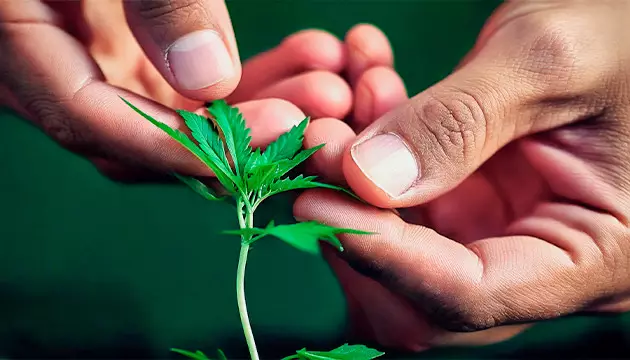
Every time you visit your hidden garden, check the stems and backs of the leaves to see if the bushes have been affected by pests. Take notes, record and monitor if there are spots on the leaves. If there are signs of infection, take steps to treat the plants or remove them. The sooner this is done, the better your chances of saving the crop.
Feeding
To achieve a healthy crop, it’s important to have a proper feeding schedule. It is better to pre-dissolve the fertilizer in water in larger volumes and ratios to make feeding easier. In the vegetation stage, cannabis needs a lot of nitrogen, while during the flowering stage, it’s better to focus on potassium and phosphorus. Depending on the nutrients or soil mix you decide to use, there will be specific guidelines for mixing ratios at the different stages of growth. However, as long as you follow these steps or have great starting soil at your location, your harvest should go as planned.
Disclaimer: Always prioritize environmentally safe growing methods. Avoid using harmful pesticides or fertilizers that can contaminate local water sources or damage ecosystems. Consider organic options to reduce environmental impact.
Harvesting
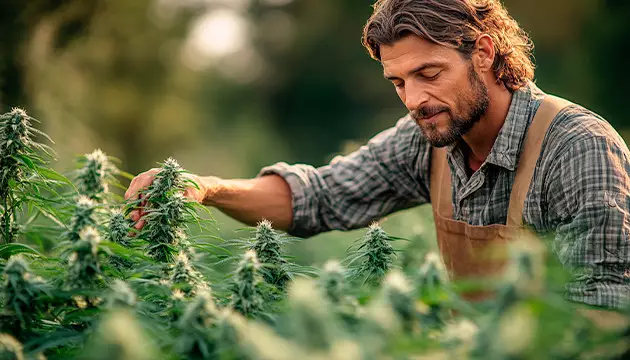
It is important to keep a grow calendar to not only track your feeding and watering schedule but also to know the proper time for the marijuana to be harvested. It’s best to research and follow any recommendations from the seed company, the internet or other growers for each strain.
In rainy fall, it’s better to harvest a little earlier or have a strain with a shorter flowering time in order to prevent decay or mold. When finally harvesting, you can stack cut branches in containers that do not carry static shock, doing so very carefully so as not to injure or lose trichomes from the buds.
Manicuring, drying and curing can be done at home in a relaxed atmosphere – it’s important to keep your time at the grow site as short as possible. The longer you spend in the area, the higher your chances of getting caught.
Into The Wild
The option of growing marijuana in the woods has historically been the natural way the earth has produced this wonderful plant. It can provide a higher quality and a lower cost for an average grower. Just keep in mind all the risks and work that will be going into reaping the rewards of a bountiful harvest. It may not be for everyone.
Herbies Head Shop expressly refuses to support the use, production, or supply of illegal substances. For more details read our Legal Disclaimer.

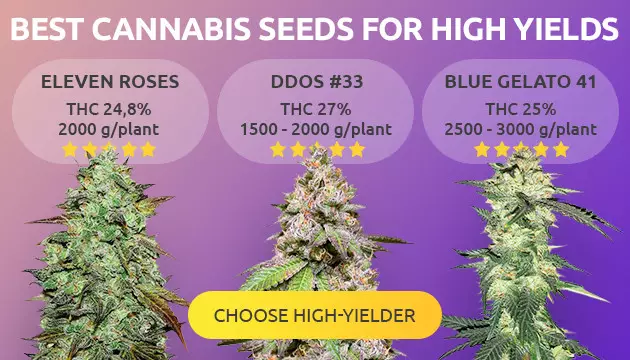

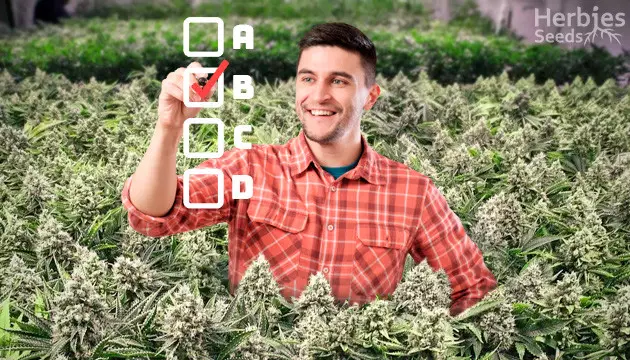

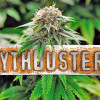
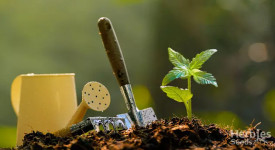
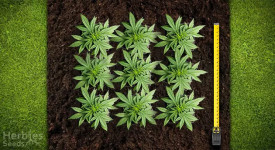


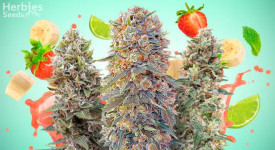

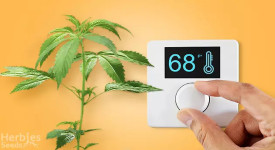
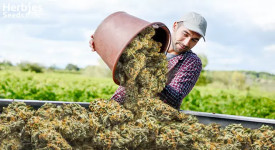
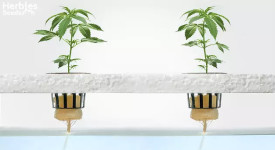
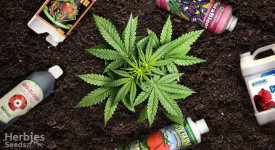
Thank you for leaving a comment for us!
Your feedback will be posted shortly after our moderator checks it.
Please note that we don’t publish reviews that: